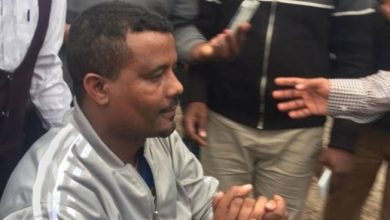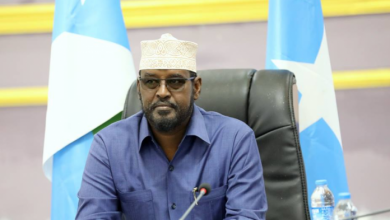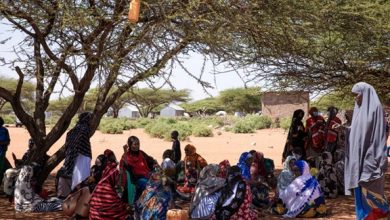Latest news update
US air strikes in Somalia are surging against Shabab
There has been a surge in the number of US air strikes in Somalia raising questions about the aims of the US mission there. There are also questions about the risk the strikes cause to civilians.
There has been a surge in the number of US air strikes in Somalia raising questions about the aims of the US mission there. There are also questions about the risk the strikes cause to civilians.
Many critics are also worried about increasing lack of transparency about US operations in Africa and elsewhere in the world.
Human right groups claim civilian casualties are increasing
While civilians deaths are increasing they are increasingly obscured. A March 2019 report by Amnesty International found that at least 14 civilians were killed in just five of the more than 70 strikes carried out by the US in Somalia since 2017. The report is based on interviews, witnesses, and medical professionals, plus photographic evidence. The US military simply disputes the report saying that none of the strikes resulted in any civilian casualties.
A recent article gives an example of civilian casualties: “Halimo Mohamed Abdi said the blast broke both her hips, left shrapnel embedded in her thigh, and caused terrible burns that cost her both breasts. Before she lost consciousness, she told me, she saw three boys—ages 9, 10, and 16—die in the explosion, which occurred at night in a field outside Bariire, a village 30 miles west of the Somali capital of Mogadishu. She also said the strike came from the sky and that afterward she had to be hospitalized for three months”
When Hamid left the hospital she returned home to find it demolished plus 25 of her goats dead. Along with many other Somalis she ended up in a squalid refugee camp with others escaping the battle with Shabab and the bombings. The appended video shows the result of a raid in August of 2017 where ten civilians were claimed to have been killed.
US has been in Somalia more than a decade
The US has for more than ten years being trying to help the Somali government defeat Shabab a militant Islamist insurgent group linked to Al Qaeda. The US has sent hundreds of troops and millions of dollars in military aid to assist the government. Most of the aid goes through the African Union peacekeeping mission which is backed by the UN.
Increasing reliance on air strikes
In 2016 the Obama administration carried out 14 strikes by both drones and piloted aircraft. This was a marked increase from prior years. The CIA is also thought to be involved in Somalia but information is very little.
The Trump administration has been much more active than Obama, as it carried out 35 strikes in 2017 and 45 in 2018. Shortly after taking office Trump announced that some parts of Somalia were areas of active hostilities. This has allowed more latitude to the military in carrying out attacks. This year could see even more there could soon be more strikes this year than all of last. The claimed death toll of militants is also going up as more than three hundred were said to be killed in 2018 while already around 250 have been killed this year.
Number of civilian casualties difficult to determine
Drone policy has been secretive for a long time. Under a 2016 rule the CIA and other federal agencies were require to report on strikes outside major conflict zones and also estimate civilian casualties. However, Trump issued an executive order last month ending that rule making the number of civilian casualties even more opaque. Amnesty International and other groups have raised concerns about the number of civilian casualties in raids. There is the same concern about raids in other countries such as Yemen and Libya.
Legal justification for the raids dubious
The 2001 Authorization for Use of Military Force (AUMF) passed after the 9/11 attacks allowed the US to target Al Qaeda and associated forces around the world. However critics argue that the bill has been used far beyond its original intent. The bill has been used instead of having more Congressional oversight of many overseas operations. However, few of US legislators’ constituents are affected by the operations and they are given little publicity. No doubt that is the way the legislators would like it to remain, off the radar.





